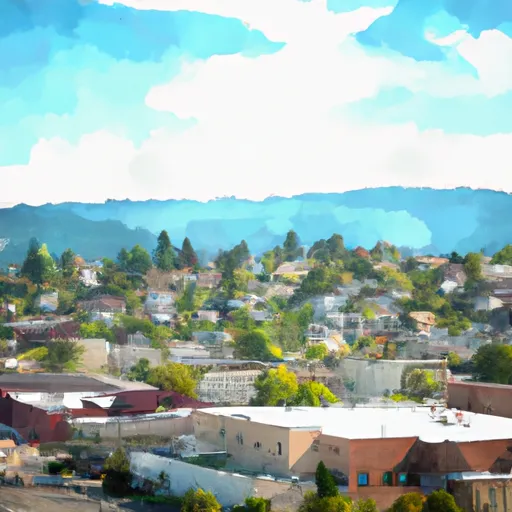-
 Snoflo Premium
Snoflo Premium
Get unlimited access to all our content
With no Ad interruptions! - Start Your Free Trial Login with existing account
Tahoma
Eden Index
Climate
8.3
•
Recreation
9.3
•
Community
•
Safeguard
6.6/10

Tahoma is a small community located on the western shore of Lake Tahoe in California. The climate in Tahoma is typically mild with warm summers and cool winters. Average summer temperatures range from 70 to 80 degrees Fahrenheit, while winter temperatures can drop to the mid-30s. The region experiences heavy snowfall during the winter months, making it a popular destination for winter sports enthusiasts.
Tahoma benefits from the hydrology constituents of Lake Tahoe, which is renowned for its crystal-clear waters. The lake provides ample opportunities for boating, fishing, and swimming. The nearby Rubicon River offers scenic hiking trails and picturesque spots for picnicking.
Outdoor recreation is a highlight of Tahoma, with numerous opportunities for adventure in the surrounding area. The nearby Desolation Wilderness provides opportunities for hiking, backpacking, and camping amidst stunning alpine landscapes. In the winter, visitors can enjoy skiing and snowboarding at the renowned resorts of Squaw Valley and Alpine Meadows.
Overall, Tahoma offers a desirable climate, access to the beautiful Lake Tahoe, and a plethora of outdoor recreational activities, making it an appealing destination for nature lovers and adventure seekers.
What is the Eden Index?
The Snoflo Eden Index serves as a comprehensive rating system for regions, evaluating their desirability through a holistic assessment of climate health, outdoor recreation opportunities, and natural disaster risk, acknowledging the profound impact of these factors on livability and well-being.
Climate Health Indicator (CHI): 8.3
Tahoma receives approximately
813mm of rain per year,
with humidity levels near 63%
and air temperatures averaging around
7°C.
Tahoma has a plant hardyness factor of
6, meaning
plants and agriculture in this region thrive during a short period during spring and early summer. Most
plants will die off during the colder winter months.
By considering the ideal temperature range, reliable water supplies, clean air, and stable seasonal rain or snowpacks, the Climate Health Indicator (CHI) underscores the significance of a healthy climate as the foundation for quality living.
A healthy climate is paramount for ensuring a high quality of life and livability in a region, fostering both physical well-being and environmental harmony. This can be characterized by ideal temperatures, reliable access to water supplies, clean air, and consistent seasonal rain or snowpacks.
Weather Forecast
Streamflow Conditions
Truckee
Area Rivers
Truckee
Snowpack Depths
Truckee
Reservoir Storage Capacity
Truckee
Groundwater Levels
Recreational Opportunity Index (ROI): 9.3
The Recreational Opportunity Index (ROI) recognizes the value of outdoor recreational options, such as parks, hiking trails, camping sites, and fishing spots, while acknowledging that climate plays a pivotal role in ensuring the comfort and consistency of these experiences.
Access to outdoor recreational opportunities, encompassing activities such as parks, hiking, camping, and fishing, is crucial for overall well-being, and the climate plays a pivotal role in enabling and enhancing these experiences, ensuring that individuals can engage in nature-based activities comfortably and consistently.
Camping Areas
| Campground | Campsites | Reservations | Toilets | Showers | Elevation |
|---|---|---|---|---|---|
| Wentworth Springs | 8 | 6,153 ft | |||
| D.L. Bliss State Park | 170 | 6,872 ft | |||
| William Kent | 95 | 6,337 ft | |||
| Sugar Pine Point State Park | 175 | 6,465 ft | |||
| Strawberry Point | 10 | 5,440 ft | |||
| Northshore | 15 | 6,411 ft | |||
| Wrights Lake | 70 | 6,949 ft | |||
| Nevada Beach | 54 | 6,213 ft | |||
| Pleasant Dispersed | 10 | 6,413 ft | |||
| Meeks Bay | 40 | 6,225 ft |
Nearby Ski Areas
Catastrophe Safeguard Index (CSI):
The Catastrophe Safeguard Index (CSI) recognizes that natural disaster risk, encompassing floods, fires, hurricanes, and tornadoes, can drastically affect safety and the overall appeal of an area.
The level of natural disaster risk in a region significantly affects safety and the overall livability, with climate change amplifying these risks by potentially increasing the frequency and intensity of events like floods, fires, hurricanes, and tornadoes, thereby posing substantial challenges to community resilience and well-being.
Community Resilience Indicator (CRI):
The Community Resilience Indicator (CRI) recognizes that education, healthcare, and socioeconomics are crucial to the well-being of a region. The CRI acknowledges the profound impact of these elements on residents' overall quality of life. By evaluating educational resources, healthcare accessibility, and economic inclusivity, the index captures the essential aspects that contribute to a thriving community, fostering resident satisfaction, equity, and social cohesion.

